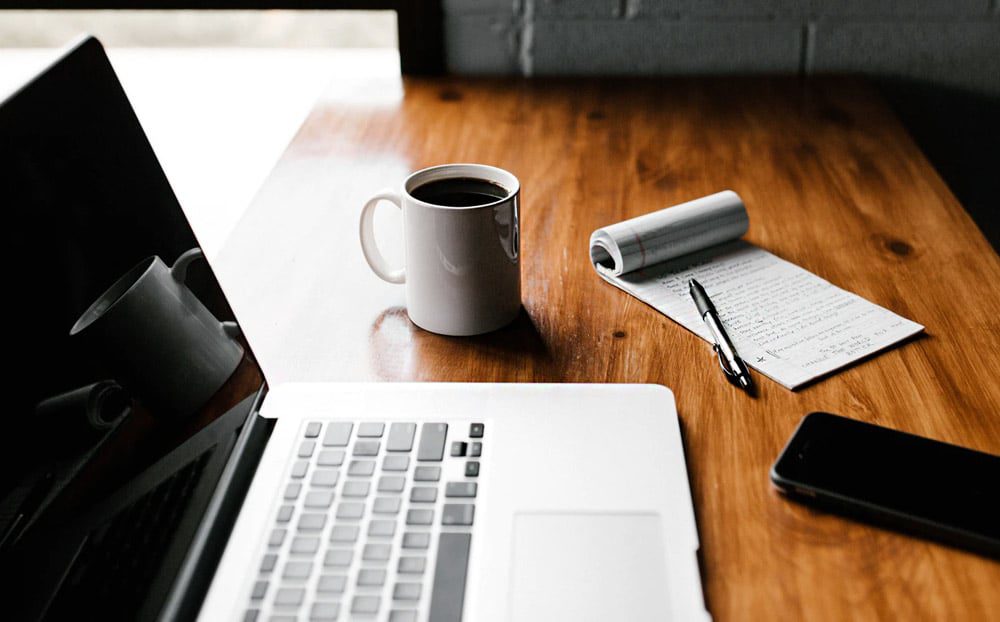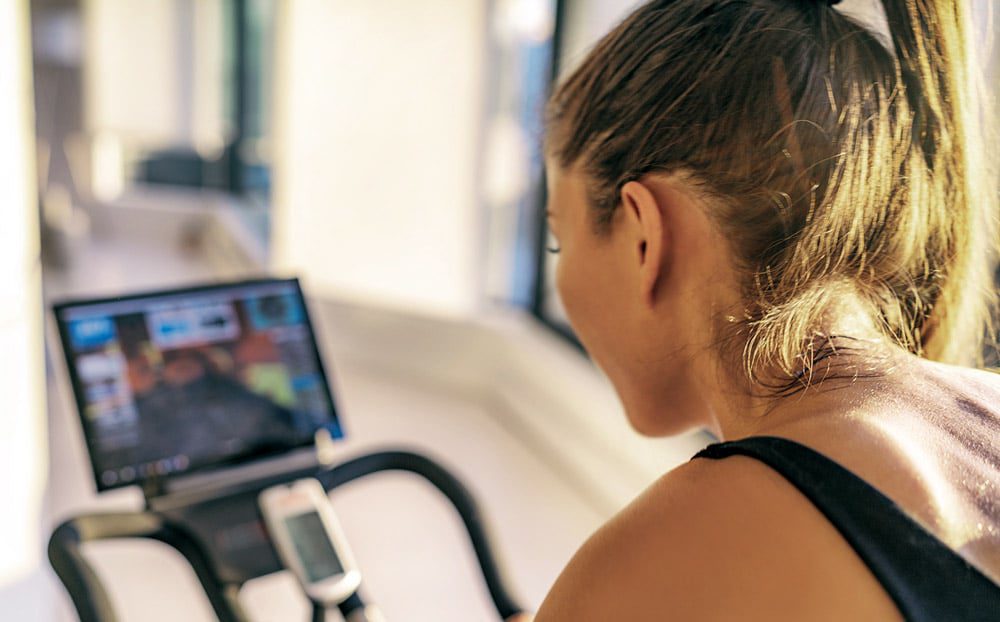As businesses are being hit hard by the first wave of COVID-19 in the United States, we are faced with an unprecedented amount of working from home across all sectors. Many cities, counties, and states are mandating a shelter at home, making it difficult to perform business tasks in the same method as before. Working remotely can provide unique challenges to different people based on their personality and work history. While some individuals may find that working from home can benefit them, many will also find it incredibly challenging to reproduce the same level of productivity and sense of connection they had while working in an office.

Single Origin’s roots date back to January of 2014, when now CEO Noel Ledesma and I worked from different sides of San Francisco, and built our business from the ground up. While our current team is larger, and we operate out of a more centralized office, we still adopt many of the principles utilized early on to create an engaged, productive team environment. Whether your business is small or large, we feel it’s a great time to share our strategy around working remotely, and how to continue doing awesome work for your business.
Below are a list of challenges that we feel might apply to your business, and our suggestions on how to address them, creating a more engaged and enjoyable work environment during this difficult time.
Challenge 1: Employees May Feel Isolated
A large part of working within an office is spending the day with colleagues and benefitting from the community energy that surrounds a shared cause. Working remotely can create a feeling of isolation amongst team members, loneliness, and can even manifest in depression. Given the doubling rate of the COVID-19 virus, it’s likely that businesses will be working remotely for an extended period of time, well beyond the April estimate.
Given this extended period that we’ll all likely be working on our own, it’s incredibly important to have plenty of communication with your teammates, particularly face-to-face if possible. While many individuals will likely take accountability and ownership over tasks through normal channels like email and text, a large portion of people are less likely to act on requests via email alone. This makes it even more important to find ways to communicate visually during this time.

At Single Origin, we leverage several different platforms to communicate, specifically Google Hangouts and Zoom for team/client calls. While we don’t operate with every call being video, other CEOs such as David Hassell of 15five recommend making everything possible a video call. Regardless of your team’s size, it’s critically important to keep some sense of human contact through face-to-face communication, and this will surely impact productivity, overall team happiness, and a sense of camaraderie.
Some of the tools we’d recommend looking at to help with this are:
- Microsoft Teams https://products.office.com/en-us/microsoft-teams/group-chat-software
- Google G-Suite https://gsuite.google.com/
- Zoom https://zoom.us/meetings
- Skype for Business https://www.skype.com/en/business/
- Slack https://slack.com/features
- Gotomeeting https://www.gotomeeting.com/
Challenge 2: Reduced Productivity
Whether it’s distractions in the home office like children, or a lack of focus due to comfort and convenience, we know working remotely can be difficult at times. Being able to transition into “work-mode” is highly beneficial to many, and inversely can be extremely difficult for individuals to “turn on” during the workday while working remotely. In addition to a different state of mind that comes with being remote (or at home), the disruption to your daily routine can be even more impactful.
Productivity suggestions we’ve adopted:
Continue your old routine with modifications
If you went on a run before work in the mornings, keep going on runs in the morning. If you would take a long lunch and go for a walk each day, continue taking a long lunch. It’s important to stick to your routine, particularly in times of distress and disruption. Obviously, your routine may have to incur some substitutions, such as an at-home workout for a gym one, or a home-made latte instead of your specialty coffee from the corner cafe, for example. But keeping your routine will help ensure that you stay locked in and focused on continuing your productive habits.
Take breaks, get some air
Working remotely can set you up for being trapped inside an isolating environment for hours. When you used to take walks around the office, or drop by the community kitchen for water cooler talk, you may find yourself feeling trapped, isolated, and anxious. We’ve found that taking several breaks throughout the day, particularly being outside, helps us maintain a good level of productivity without feeling too claustrophobic. Being in nature, practicing meditation, or calling a friend or loved one could be a great short break to help you re-energize.
Give yourself some extra grace right now
It’s important to allow yourself to feel how you need to feel during this time. Different people will be affected in their own unique way during these unprecedented times. We’re worried about ourselves, about our family, and about the world as a whole, and this can weigh heavily on you. Be sure to do your best, but also give yourself some extra grace when you aren’t able to operate at the level you normally would.

Challenge 3: Maintaining Professionalism
Being stuck working remotely from home can certainly cause some Individuals to slip into a state of laze. Your routine is upended, you won’t be going out much, and likely won’t encounter too many people through your day to day. This is why it’s so critical during this time to do what you can to build more structure into your day. Creating more structure can greatly improve team productivity and working relationships, and drive progress forward during a difficult time. Whether keeping your professionalism means getting dressed for work each day, or showing up to meetings on the dot, we encourage our team to do whatever they need to maintain a level of professionalism that we’d be proud of, even from an office. Regardless of working remotely or from the office, the client experience should remain the same.
Maintain High Email Quality
This one can fly under the radar of most people, but can be an effective way to improve team communication and project management. At Single Origin, we promote using email titles extremely intentionally. Email titles like “New project” and “Just thought of this” are great ways to confuse your teammates, get lost in the inbox, and not receive any response. An example of a project email we might send a client could be “Request for Assets – Single Origin x Client — Website Redesign.” This may seem like overkill, but we’ve found that this system has been incredibly powerful internally. We’re able to quickly understand the purpose of an email, as well as find that email again, or appropriately tag it. In addition to email titles, it’s good etiquette to provide a clear, actionable response to your recipient. Without the ability to clarify across the room, more time and thought needs to go into communicating clearly.
Project Management Platforms
For entire teams working remotely, it’s important to have a communal area to work on projects, and to showcase all the work being done. For Single Origin, we’ve found that Basecamp works fantastically for us. We can communicate about ongoing projects, post updates, and collaborate on tasks that need to get done. Having a project management platform that fits your needs can be a bit elusive, with some people suggesting X while others say Y. We’ve done our best to briefly describe a few project management tools and the benefits of them from a high level.
- Basecamp:
Basecamp has a minimal UI and is extremely easy to learn. It has dedicated spaces for your team, but also has areas that you can selectively share with clients. It’s great to manage to-do’s, as well as team communication, but lacks tagging features and granularity of the other platforms. In addition to these features, Basecamp also allows for file storage and document management. - Asana:
Asana centers around a task list functionality, and features a robust tagging functionality. It’s a bit difficult to learn and could be complex in its UI, but could be a good fit for various departments all looking to have visibility into their work at once. Asana lacks a document management solution. - Slack:
Slack centers around the concept of direct messaging and group chats. It’s a great way to communicate directly with people on your team in a quick, high-level fashion. Slack is minimal and probably the easiest to understand, but doesn’t have many features in terms of to-do’s and assigning projects. We recommend Slack more for communication and chatter, and less for document management and projects.
Use the Phone
Above all else, pick up the phone. If your team members (or you) have a misunderstanding, simply pick up the phone and call them. At Single Origin, we’ve found that over-communicating is almost always better internally than under-communicating.
Challenge 4: Lack of Transparency
Working with team members remotely can be a different type of challenge. Often, for people working in an office, it’s easy to glance over and see people bustling, answering phone calls, and in meetings. Without that visibility, it can be easy to find yourself wondering what others are doing. In some cases, this could be at the detriment of team morale, with team members feeling like they are working harder than others, or more than colleagues. Below are a few ideas on how to include more visibility into your team’s workflow and encourage productivity.
Use a project management tool
Using a PM tool like Basecamp, Asana, or Slack can help team members see what’s going on in other areas of the company, and feel connected to their colleagues. Some project management tools even allow for collaborative work on projects at the same time, increasing the feel of productivity and team.
Communicate regularly, or even over-communicate
For many, this is an obvious idea, but it’s sometimes difficult to change one’s habits consistently, and for a long duration. Given that COVID-19 will likely remain for many months until there is a vaccine or herd immunity, some may find it difficult to continuously over-communicate with others. For more introverted individuals, this can be particularly hard. People who tend to do minimal interaction with others will retain those habits, and could potentially find themselves even more isolated than before. This could manifest in unhappiness, productivity stagnation, and moodiness. It’s important during this pandemic to remind yourself to over-communicate with your colleagues and to make sure you’re creating an inclusive environment with all your teammates.
Assume your colleagues are doing their best
As a business owner, this has been an incredibly valuable lesson for me over the years. As someone who pushes incredibly hard to be productive at all times, it’s easy to fall into a world view that people around you aren’t doing their best. This can be especially true when there is a lack of visibility. As a business owner, it’s our job to hire the best people we can. We should be hiring individuals that show they can self manage, that can adapt to find solutions, and can get the job done. It’s easy to fall prey to a scarcity mindset, and question your team’s effort. What I have learned over the last seven years is that you need to hire right, and then give people the grace they need to operate, especially during difficult times like this. There may be days where things are quiet, or tasks are slow to get done, but we’re in unprecedented times, and we need to understand that everyone is doing their best to deal with their own issues, work, and stay healthy.
Challenge 5: Maintaining Your Personal Health
While working remotely for long periods of time, it’s easy to lose focus on your personal health and how much of a positive impact your previous routine may have had on it. What may have been 2000 steps walking to and from your car quickly evaporates, and the salad bar down the street from the office may turn into microwavable meals from your freezer. It’s important to give yourself some grace during this period of adjustment, but also strive to improve your work-from-home routine so that it mimics your productive routine of days prior. Take time to brainstorm ways to replace your previous activities with WFH counterparts that accomplish the same tasks. Maybe going for early morning and evening walks is a great way to charge up, and disconnect from “office” time. Take breaks throughout the day and remove yourself from your work environment for short periods of time, just to change up your scenery and give yourself a mental break. With some thoughtful self-accountability and adjustments, you can continue to lead a healthy life. Drink lots of water, eat well, exercise — and these will pay off down the line ten fold.

Challenge 6: Falling Prey to Distractions
Lastly, working from home can lead to household distractions. Without structure, discipline, and managing your work environment, the comforts and distractions of home can become productivity’s worst nightmare. Working remotely from home should be treated as a home office. We’ve found that maintaining your space and keeping your workspace clean can have an incredibly positive impact on your headspace as well. Without constant clutter, you’re able to focus on work more clearly. In addition to a clean workspace, one of the biggest suggestions we can make is noise cancelling headphones. Bose, Beats, Apple, and Sennheiser all make fantastic noise cancelling headphones that also allow you to take phone calls. Noise cancellation helps narrow your focus and tune out unwanted noise.
For many parents at home, working from their home office can be both a curse and a pleasure. While spending more time with your family can be a great support structure during this time, and also bring you closer together, we recommend creating dedicated blocks of time throughout the day to focus on work and your family. By creating chunks of time and scheduling them out, you can create a routine where your children and family members get your undivided attention and other times where you can focus on your work.
Closing
With the right measures in place, working from home can be fantastic. It gives you the flexibility to have more control over your day without spending unnecessary time in the car, to bypass a lot of unscheduled meetings and water-cooler talk, and to be more active. What you do with your time, your routine, and your health is entirely up to you. We know that this time of uncertainty is difficult for everyone, and believe that we’re all doing our best to work through this. Hopefully at least a few of the tips above can have a positive impact on your work, and help create a healthy routine for you.
Have questions on these ideas or need help understanding how you can adjust your marketing during this difficult time? We’ve got your back. Contact Single Origin, and we’ll do our best to point you in the right direction.
